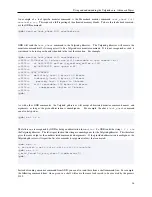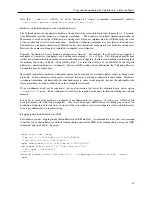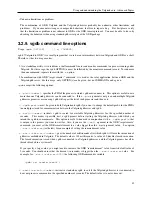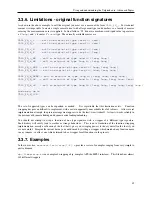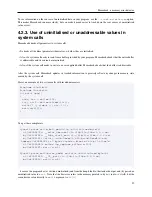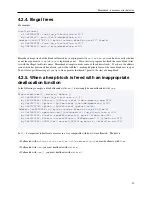
Using and understanding the Valgrind core: Advanced Topics
Note that
--vgdb=full
(+500%, see above Precision of "stop-at" commands) automatically activates
--vex-iropt-register-updates=allregs-at-each-insn
.
• Hardware watchpoint support by the Valgrind gdbserver.
The Valgrind gdbserver can simulate hardware watchpoints if the selected tool provides support for it. Currently,
only Memcheck provides hardware watchpoint simulation.
The hardware watchpoint simulation provided by
Memcheck is much faster that GDB software watchpoints, which are implemented by GDB checking the value
of the watched zone(s) after each instruction.
Hardware watchpoint simulation also provides read watchpoints.
The hardware watchpoint simulation by Memcheck has some limitations compared to real hardware watchpoints.
However, the number and length of simulated watchpoints are not limited.
Typically, the number of (real) hardware watchpoints is limited.
For example, the x86 architecture supports a
maximum of 4 hardware watchpoints, each watchpoint watching 1, 2, 4 or 8 bytes. The Valgrind gdbserver does
not have any limitation on the number of simulated hardware watchpoints. It also has no limitation on the length of
the memory zone being watched. Using GDB version 7.4 or later allow full use of the flexibility of the Valgrind
gdbserver’s simulated hardware watchpoints. Previous GDB versions do not understand that Valgrind gdbserver
watchpoints have no length limit.
Memcheck implements hardware watchpoint simulation by marking the watched address ranges as being unad-
dressable. When a hardware watchpoint is removed, the range is marked as addressable and defined. Hardware
watchpoint simulation of addressable-but-undefined memory zones works properly, but has the undesirable side
effect of marking the zone as defined when the watchpoint is removed.
Write watchpoints might not be reported at the exact instruction that writes the monitored area, unless option
--vgdb=full
is given. Read watchpoints will always be reported at the exact instruction reading the watched
memory.
It is better to avoid using hardware watchpoint of not addressable (yet) memory: in such a case, GDB will fall
back to extremely slow software watchpoints. Also, if you do not quit GDB between two debugging sessions, the
hardware watchpoints of the previous sessions will be re-inserted as software watchpoints if the watched memory
zone is not addressable at program startup.
• Stepping inside shared libraries on ARM.
For unknown reasons, stepping inside shared libraries on ARM may fail. A workaround is to use the
ldd
command
to find the list of shared libraries and their loading address and inform GDB of the loading address using the GDB
command "add-symbol-file". Example:
(gdb) shell ldd ./prog
libc.so.6 => /lib/libc.so.6 (0x4002c000)
/lib/ld-linux.so.3 (0x40000000)
(gdb) add-symbol-file /lib/libc.so.6 0x4002c000
add symbol table from file "/lib/libc.so.6" at
.text_addr = 0x4002c000
(y or n) y
Reading symbols from /lib/libc.so.6...(no debugging symbols found)...done.
(gdb)
39
Содержание BBV
Страница 176: ...Valgrind FAQ Release 3 8 0 10 August 2012 Copyright 2000 2012 Valgrind Developers Email valgrind valgrind org ...
Страница 177: ...Valgrind FAQ Table of Contents Valgrind Frequently Asked Questions 1 ii ...
Страница 302: ...README mips based on newer GCC versions if possible 95 ...
Страница 303: ...GNU Licenses ...
Страница 304: ...GNU Licenses Table of Contents 1 The GNU General Public License 1 2 The GNU Free Documentation License 8 ii ...












